Natylie Baldwin's Blog, page 248
March 6, 2019
Vladimir Lenin: The Shaping of a Revolutionary (Part I)
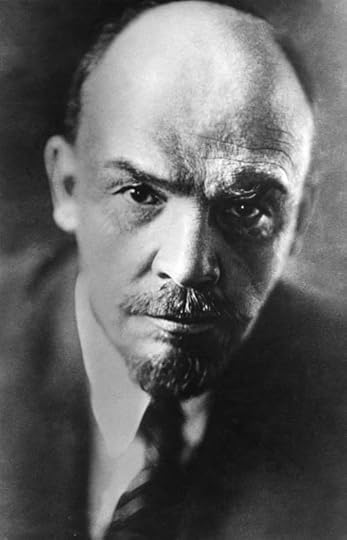 German Federal Archives [Public domain]
German Federal Archives [Public domain]Another excerpt from my forthcoming book, this one from the chapter covering the Russian Revolution of 1917.
Narodnaya Volya (from a previous post) would play another pivotal role in the fate of Russia and its revolutionary future. A young student named Alexander Ulyanov soon fell under the group’s sway and in 1887 was arrested for involvement in a plot to assassinate Tsar Alexander III. Refusing to ask for clemency, Alexander was hanged (Salisbury 1977; Krausz 2015).
Alexander Ulyanov was the older brother of Vladimir Ulyanov –
later known as Vladimir Lenin. Vladimir
and the rest of the family did not know of Alexander’s revolutionary activities
until his arrest. The death of Alexander
deeply affected Vladimir who up to that point had shown little interest in politics,
much less revolution. As one chronicler
of Lenin’s path as a revolutionary stated:
Some critics have tried to find cruelty, single-mindedness, egocentricity, or ultraism in the record of Vladimir’s early years. It does not stand up in the objective evidence of those who knew him. This was no rebel, no iconoclast, no youthful messiah. Vladimir was by all accounts as normal and pleasant a youngster as any parents could have desired (Salisbury 1977).
In fact, those who knew him later in life said that Lenin was not motivated by power but by genuine conviction. Combined with his boundless energy and “iron will,” this gave him tremendous charisma. Compared to Trotsky and Stalin, he was considered to have the least dictatorial personality, taking the time to try to educate and persuade (Krausz 2015).
The Ulyanov boys had grown up in a middle class rural
environment. Their father was educated
in math and physics and enjoyed a career as a local school inspector. He was a liberal reformer who had supported
Alexander II. He and his wife provided
an intellectually stimulating environment for their children, encouraging reading
and games, and instilling reformist values (Salisbury 1977).
By all objective measures, the boys enjoyed a relatively stable
and happy home life. Vladimir was known
as a smart, rambunctious and playful youngster who liked music and chess. His brother, on the other hand, was solemn,
studious and compassionate but Vladimir idolized him, often seeking to emulate
him.
Alexander eventually left home to go to university in St. Petersburg. His journey to radicalization was not uncommon for idealistic youths of the time. Having grown up rather insulated in the provinces, upon arriving in the big city, Alexander witnessed the deplorable conditions of workers as well as brutal crackdowns by the police on demonstrations. In fact, he had participated in a demonstration just weeks before his arrest that had been handled particularly violently by the authorities (Salisbury 1977).
Vladimir was devastated by his brother’s death and the sudden
shunning of the family by others in their community (Krausz 2015). Witnesses describe a young man having trouble
expressing his grief: “It was notable that
in all the accounts no member of Vladimir’s family, none of his friends, offers
any remark or expression made by Vladimir in those days in Simbirsk. Change there was. Everyone noticed that. The gay, laughing boy, full of tease and
jokes and high spirits, overnight became serious, thoughtful, gloomy.”
(Salisbury 1977)
The effects were still visible four years later in 1891 when Vladimir went to St. Petersburg to take his law exams. While there, he looked up one of his brother’s close friends, S.F. Oldenburg:
[Vladimir] asked many questions about his brother, especially his scientific work. Oldenburg remembered Vladimir as ‘gloomy and silent,’ and said he obviously suffered deeply over his brother’s death. (Salisbury 1977).
The lingering effects of Alexander’s demise would be seen in Vladimir’s now single-minded focus on revolutionary politics. By 1893, after practicing law successfully for around 18 months, he began immersing himself in revolutionary studies. He was already under surveillance and barred from government employment (Krausz 2015; Salisbury 1977). His mother disapproved and wanted him to become a farmer, but she would help to support him financially throughout his career, including during his stints of exile and emigration (Krausz 2015).
As part of his revolutionary education, he repeatedly read What is to Be Done? (Salisbury 1977) and later acknowledged Chernyshevsky to be second only to Marx in influence (Szamuely 1974).
Lenin, however, rejected the use of terrorism and instead advocated a strong centrally controlled movement of dedicated and professional revolutionaries who acted as secret conspirators.
To be continued.
References:
Salisbury, Harrison E. Black Night, White Snow: Russia’s Revolutions 1905 – 1917. De Capo Press. New York, NY. 1977; Krausz, Tamas. Reconstructing Lenin: An Intellectual Biography. Monthly Review Press. New York, NY. 2015; Szamuely, Tibor. The Russian Tradition. Fontana Press. 1974.
March 3, 2019
Gilbert Doctorow on The Kremlin’s Military Posture Reconsidered
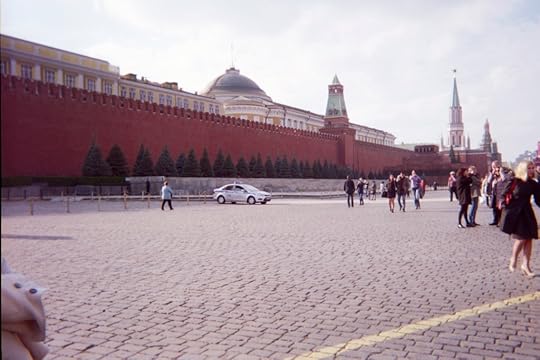 Kremlin Wall, Red Square, Moscow; photo by Natylie S. Baldwin
Kremlin Wall, Red Square, Moscow; photo by Natylie S. BaldwinGeopolitical analyst Gilbert Doctorow has done an important write-up on Putin’s February 20th speech to the Federal Assembly in which the Russian president provided more details on Russia’s military posture in response to Washington’s abrogation of the INF Treaty and implementation of missile shields in Eastern Europe. An excerpt and link to the complete article are below – Natylie
To the vast majority of Americans, including the foreign policy establishment, the question posed in the title may seem something of a joke. After all, absolute military superiority over Russia and other potential rivals for global influence has been the objective of US military policy for the last twenty-five years or more, at vast budgetary expense. One instrument for its achievement has been the roll-out of a system known as the global missile defense, which in effect encircles Russia and China, posing the threat of massive simultaneous missile strikes that could overwhelm any defenses. To intelligence specialists at the Pentagon, who likely have been watching, as I have done, what the Kremlin disseminated earlier today in Russian only versions so far, the question of Moscow turning the tables is entirely serious and shocking.
When Vladimir Putin first publicly described Russia’s latest state-of-the-art weapons systems in development and deployment one year ago, during his 1 March 2018 Address to the bicameral legislature, he said these systems would ensure the re-establishment of full strategic parity with the United States. Western media sniggered. US politicians, with a very few exceptions, chose to ignore what they considered to be just domestic electioneering during a presidential campaign that Putin was expected to win handily. It was all a bluff, they said.
In his annual Address [on] Wednesday, 20 February, President Putin expanded on those developments in armaments, reported which systems were now entering active service. He made it clear one of them is the planned Russian response to a likely consequence of US withdrawal from the Intermediate Nuclear Forces (INF) Treaty: the stationing by the U.S. of nuclear armed cruise missiles like the Tomahawk on land and directed against Russia, all of which would reduce the warning time of incoming attack in Moscow to just 10–12 minutes and constitute an existential risk.
Putin, being Putin, did not spell out the threats implicit in the prospective deployment of the new Russian weapons systems. He remained always polite and open to discussion in his speech. But as we saw earlier today, he entrusted the task of dotting i’s to a member of his close entourage, Dmitry Kiselyov who is the chief administrator of all news programs on Russian state television while also serving as the anchor of the widely watched News of the Week, a summary newscast shown on two federal channels on Sunday evenings. To expand the circulation still more, the segment dealing with Putin’s Address and the new arms systems was released as a separate 10 minute video on YouTube.com early in the afternoon.
Continue reading Doctorow’s article here
Read Putin’s full speech to the Federal Assembly here
February 26, 2019
Stephen F. Cohen’s Presentation in Berkeley
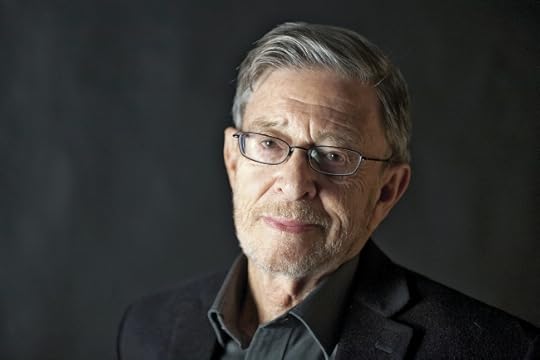
Professor Stephen F. Cohen (photo in Chronicle of Higher Education, by Vladislav Dokshin)
Professor Stephen F. Cohen and his wife, Katrina vanden Heuvel (editor of The Nation) spoke at the First Congregational Church in Berkeley on the evening of February 25th as part of his book tour for the newly released War with Russia? From Putin and Ukraine to Trump and Russiagate, Around 200 people were in the audience for this event, co-sponsored by the local Pacifica radio outlet (KPFA).
Cohen spoke first and much of what he said will be familiar to those who have followed his weekly interviews with John Batchelor and his columns in The Nation over the past five years. The thrust of his remarks involved the delineation of how Washington squandered the possibilities that came with the end of the 40-year cold war between the U.S. and the Soviet Union by choosing to take a triumphalist attitude. The decision to take that path has largely been responsible for the dangerous mess we now find ourselves in with the world’s other nuclear superpower.
Cohen helpfully defined what a cold war is: a relationship between two nations with more conflict than cooperation and no direct “hot” war. Historically, the cold war(s) between the U.S. and Russia have been the most important due to their military capabilities, mainly nuclear. He also pointed out that the U.S. and Russia have experienced 3 cold wars:
1918 – 1933 – During this period, the U.S. refused to recognize the Soviet Union and no dialogue occurred between the two powers; however, this cold war was not very dangerous due to the fact that there was no arms race. It ended when president Franklin Roosevelt pursued detente by officially recognizing the Soviet government.1948 – 1989 – After the WWII alliance, relations broke down and an arms race emerged after the Soviet Union attained nuclear capability. There were periods of detente, the first was between Eisenhower and Khrushchev, followed by Kennedy and Khrushchev, Nixon and Brezhnev, and Reagan and Gorbachev.2014 on – Cohen stated that he suspected a new cold war was in the making as early as the Clinton administration when Washington a) reneged on its promise to Gorbachev not to expand NATO eastward if he agreed to allow a reunified Germany into the military alliance, and b) attacked Serbia (a close ally of Russia with cultural and ethnic ties). But any doubts were swept away after the Ukraine crisis of 2013-14.
Cohen reminded the audience that the 40-year cold war between the U.S. and Russia (Soviet Union) was a negotiated settlement agreed to be in the interests of both parties and that there were no losers. All western leaders at the time acknowledged this fact. But during his re-election campaign, George H.W. Bush claimed that the U.S. had won the cold war and the conflation of the end of the cold war and the subsequent collapse of the Soviet Union began.
Cohen pointed out that it was now “axiomatic” and accepted as fact that the U.S. “won” the cold war. He cited the history books that his grandchildren now read in school as perpetuating this falsehood and the dangerous triumphalist attitude that goes along with it. Furthermore, most academic literature apportions blame for the current cold war on Russia, particularly on Putin. By contrast, most serious academic literature apportions blame in a more balanced way for the previous cold war.
He also discussed, of course, the media’s dangerous propagating of this misinformation and the blackout on alternative voices in the NYT/WaPo/MSNBC/CNN and, to a lesser degree, The Wall Street Journal and Fox which are both conflicted about Trump.
He reiterated that this was one of the things that made this cold war more dangerous than the last one: back then, some debate was allowed in the media and advocates of detente were organized and had a voice.
Other conditions that make this cold war more dangerous include the fact that the military divide is now on Russia’s borders instead of Berlin, providing no buffer zone. The proxy wars, such as Ukraine and Syria, are much closer to Russia’s borders rather than somewhere like Africa. Of course, they are very far away from the U.S.
Moreover, the zealous political and media project of characterizing Trump as a Russian asset or agent compromises his ability to effectively negotiate a deescalation of any possible military confrontation that may arise from the above mentioned proxy wars or an accident.
Cohen believes that in order to end this new cold war, Washington must accept that Russia has major power interests. This translates into no U.S./NATO military bases on Russia’s borders. He also believes that existential cooperation needs to happen, such as a partnership against terrorism.
My own thought on this last point is that Washington is not likely to be genuinely interested in going after terrorism when it has such a history of using terrorists to indirectly attack its perceived opponents’ interests. Examples include the use of terrorists in Afghanistan against the Soviet Union in the late 1970’s/early 1980’s and Operation Timber Sycamore in Syria in recent years. But the more general point of actively cooperating on major areas of real interest is well taken.
Vanden Heuvel spoke after Cohen. She had a different emphasis with her remarks. One of the first points she made was the toxic effects that “cold wars” have on progressive interests domestically. They narrow the space for dissent, adversely affecting civil liberties and stifling debate on critical issues. They also serve as a self-perpetuating excuse to funnel disproportionate amounts of the budget into “defense,” thereby hobbling the funding of much-needed domestic programs that most Americans want, such as Medicare for All and infrastructure projects.
Another point vanden Heuvel made, which was touched on by Cohen, was the very disturbing trend of criminalizing diplomacy. Anyone who has had contacts with Russia is now being cast under suspicion of traitorous intent. First, it was individuals associated with Trump – many of whom are admittedly shady and corrupt in their financial dealings – but the net seems to have been cast so broadly by investigators that actions that were previously considered a normal part of possible diplomacy have been characterized as disloyal.
Then it spread to those of Russian nationality who have been studying in the U.S. and networking with like-minded Americans to expand civics projects in Russia.
Now Vanden Heuvel recounted the recent experience of a respected independent scholar she knows who specializes in arms control issues who has been asked by the Senate Intelligence Committee to provide all documentation involving his contacts with Russians and travel to Russia.
Cohen has made reference to the fact that he and his wife don’t always agree with respect to their analysis of the domestic Russian political scene or the value (or lack thereof) of the Mueller investigation. This became evident in the Q&A portion of the event, with vanden Heuvel a couple of times interjecting probing questions as Cohen was finishing his answer – a sign that she didn’t entirely agree with what he was saying.
One of these questions had to do with whether they thought Trump could possibly be a vehicle for peace with Russia. Cohen said that even if we disagree with other things that Trump does, we should support his intent and any actions he may take to deescalate with Russia. Vanden Heuvel made it clear that she didn’t think Trump’s actions indicated he was capable of being a vehicle for peace. She asked Cohen whether he agreed that peace wasn’t just the absence of conflict or the aversion of crisis.
A man in the audience behind me shouted out, “But that would be a great start right now, wouldn’t it?”
I couldn’t disagree with him.
February 20, 2019
Review: Sofia Perovskaya Terrorist Princess: The Plot to Kill Tsar Alexander II and the Woman Who Led It
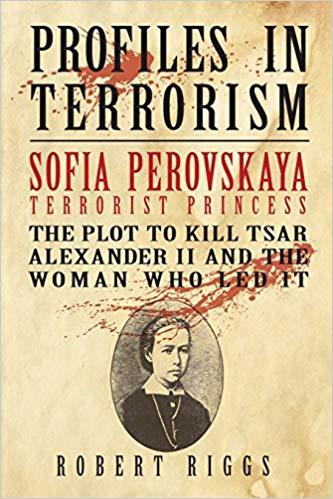 h
hOrder book here: https://www.amazon.com/Sofia-Perovskaya-Terrorist-Princess-Alexander/dp/0999155911
Over the President’s Day weekend, I attended my first San Francisco Writer’s Conference. During a short break on the second day, I perused the area where tables were set up in which vendors offered their services and some attending authors had their published books for sale.
Imagine my delight when I came across this book by fellow attendee Robert Riggs – especially since I’d just been working on the chapter of my own book involving Alexander II. I immediately plunked down my $20 and started reading it later that night in my room and finished it within a couple of days. I later encountered the author at a session for non-fiction writers. He signed my book and we had a short but interesting discussion on historical Russia.
This is actually the first published book in a series Riggs is doing on what terrorists have in common in terms of personality and background, so the emphasis is on how Sofia Perovskaya – who masterminded the assassination of the reformist tsar – fits a profile of a long list of terrorists. Future books planned for the series will cover other perpetrators of political violence such as John Brown, John Wilkes Booth, as well as more recent individuals.
Based upon the studies of Walter Lacquer, Riggs reiterates that terrorism is not a product of poverty, injustice or any particular religion, ethnicity, etc. Furthermore, terrorists themselves do not typically come from the aggrieved groups on whose behalf they claim to be acting. From the introduction, Riggs writes:
By no means poor and oppressed beings, they are generally children of wealth and privilege who go overboard in adopting the cause of others….There is an identifiable constellation of personality traits, what we call here a profile, that is strongly associated with persons who act out as terrorists, regardless of the particular cause or value structure that the terrorist happens to be supporting….Unfortunately, we see that under certain conditions terrorists can “grow” other terrorists by exploiting, cultivating and bringing out its inherent personality attributes, especially among young people. (pp. iii – iv).
While I certainly found this thesis fascinating, I was very interested in the historical background provided by Riggs of Russia during the 1860’s and 1870’s, including the revolutionary philosophy that was influential during this time.
Riggs gives a detailed outline of the 1863 novel What is to Be Done? by Nikolai Chernyshevsky, which captured the imagination of a segment of restless young revolutionaries. The book illustrated the ideals of a utopian future filled with socialist coops and equality between the sexes. However, it also was interpreted as having oblique references to the necessity of destruction and even suicide to achieve the utopian goal.
The novel greatly influenced other writers and revolutionary thinkers, including Mikhail Bakhunin, who in turn, influenced a segment of frustrated reformers and activists such as Perovskaya, a veteran of the largely unsuccessful “peasant movement” that was aimed at raising the consciousness of peasants toward rebellion.
Bakhunin and his fellow travelers preached the “necessity of violence for suppressing the privileged classes.” There was no more patience for gradual reforms, consciousness-raising, or non-violent forms of direct action such as strikes, blockades, etc.
Bakhunin eventually teamed up with Sergey Nechaev in Switzerland. Nechaev was known for being manipulative and stridently intolerant of those with differing viewpoints. He had fled Russia after engaging in violent activities that had earned him attention from the authorities, including the murder of an early follower who had turned against him.
Together, they wrote Catechism of a Revolutionary which outlined the requirements for revolutionaries to be successful. The requirements included: the forsaking of all other interests and attachments for the revolutionary project; the suppression of empathy and engagement in anti-social activity on behalf of opposing all established civil order, institutions, customs and morality; the only criteria for determining morality was whether something advanced the revolutionary project or not; the ends justified the means; willingness to die and endure pain for the revolutionary project; and, in the service of expediting the revolution, it was permitted for conditions to actively be worsened for the future beneficiaries of the revolution. (pp. 95-98)
Within the original organization that Perovskaya had been active in, a split emerged between those who advocated terrorism and those who preferred other direct actions along with the continued education and propagandizing of workers and peasants.
Perovskaya and her supporters ultimately decided to focus solely on assassinating the tsar. They made several failed attempts that involved the tunneling of areas beneath routes Alexander was supposed to take in his travels around St. Petersburg.
They finally achieved their goal on March 1, 1881 with a series of assassins stationed at intervals on the tsar’s route, each armed with a homemade bomb to toss at the imperial carriage.
Ironically, word had gotten out shortly before that Alexander had decided on another round of reforms which would have laid the groundwork for a constitution. Some of Perovskaya’s colleagues had voiced misgivings at this point about continuing to pursue regicide, suggesting the possibility of giving the reforms a chance.
But Perovskaya’s mind was made up and enough of her colleagues agreed to participate in the plan.
After the assassination, police were able to get some of the revolutionaries to turn on others. This, along with surveillance and a sharp investigator, eventually led to the capture of all the perpetrators. After a sensationalist trial, they were all publicly hanged.
Although I approached this book primarily with an interest in Russian history of the period, I also found the psychological portrait of Perovskaya and her partners in crime to be compelling.
February 9, 2019
The Mongol Legacy in Russia
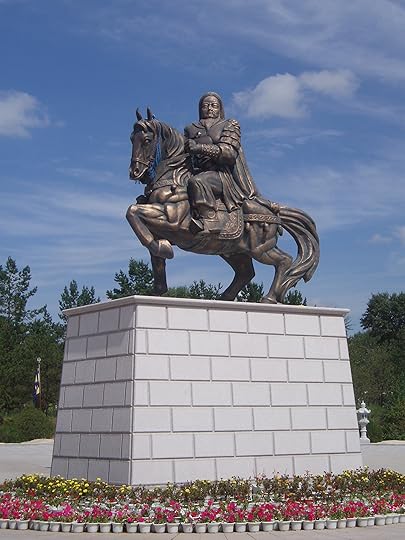 Fanghong [CC BY-SA 3.0 (https://creativecommons.org/licenses/...) or GFDL (http://www.gnu.org/copyleft/fdl.html)], from Wikimedia Commons
Fanghong [CC BY-SA 3.0 (https://creativecommons.org/licenses/...) or GFDL (http://www.gnu.org/copyleft/fdl.html)], from Wikimedia CommonsAn excerpt from Chapter 1 of my forthcoming book:
By the time the Mongols first invaded in 1223, the Kiev Russian territory had degenerated into rivalries between princes who lorded over around “a dozen or so” independent areas which resulted in disorganized rule (Szamuely 1974).
Subsequently, the Mongols were able to burn, sack and massacre
virtually all cities and towns of the territory in short order. Around two thirds of the population perished
and many survivors retreated into the forests, taking solace in their Orthodox
faith (Massie 1980). They eventually
migrated further out to less vulnerable areas, closer to Moscow. As Tibor Szamuely described in The Russian
Tradition, these Russian refugees migrated to form:
…thousands of tiny, self-contained, scattered peasant communities existing largely in isolation, using their primitive implements to clear small patches of subsoil amidst the great forests, and, having exhausted them, moving on again along the banks of numerous rivers (Szamuely 1974).
The Mongols reigned over the land through the 13th and 14th
centuries, forcing the surviving Russians into complete subjugation. They were able to impose their centralized
and absolutist rule on the scattered Russians who had lost their complex Slavic
tribal bonds in the process (Szamuely 1974).
Massie describes an important aspect of this rupture of bonds among the
Slavs who’d constituted Kiev Rus:
Earlier as the Slavs had expanded and absorbed the land, they had fallen into two natural divisions: the Great Russians in the north and the Little Russians in the south. After the Mongol invasion, the Little Russians were cut off from the Great Russians. While the Great Russians became vassals of the Mongols, the Little Russians, who were later known as Ukrainians, were taken over by the Poles and the Lithuanians (Massie 1980).
The Mongols, for all of their viciousness, did have a socio-political
ideology. It required absolute
submission to the power of the Khan, who embodied the state. This Khan owned all of the land and had
unqualified authority over his subjects.
Land might be temporarily given to others to be overseen at the pleasure
of the Khan who could withdraw the privilege at any time. The overall objective was to create an empire
that, after quick and dirty wars of conquest, would be ruled over by the Khan
as a “worldwide social order based on justice and equality,” living in eternal
peace (Szamuely). The price for this
security and justice was perfect submission.
The efficient rule of the Mongols, which lasted for almost 250 years,
was achieved by re-establishing a form of national unity from the top,
delegating responsibility at the local level for maintaining peace (with
quarreling princes, no less), collecting tribute (taxes), and enforcing the law
to those princes and those among their entourage who showed
trustworthiness. Faithfulness to the
Khan/state was rewarded through a system of seniority among the princes (Szamuely
1974).
The basic principles of Mongol rule – security and justice in exchange
for submission to an absolute central authority – would influence Russian
governance into the 20th century.
The one city that was spared was Novgorod. Due to a combination of fortuitously bad
weather that prevented the invaders from penetrating the city and the continual
payment of tribute by its ruler, Alexander, Novgorod remained intact. Alexander also fought off a Swedish invasion
instigated by an opportunistic pope who hoped to capture Novgorod and convert
it to Catholicism (Massie 1980).
As Russians fled from Kiev and surrounding areas, Moscow – once
considered a small and unimportant “trading post in the wilderness” (Massie
1980) – gradually developed into a prominent city that was influenced by the Mongols
instead of the west and by a mystical rather than scholastic emphasis by the
Orthodox Church (Billington 1970).
The princes of Moscow collected tribute from their subjects which they,
in turn, used to pay tribute to the Mongols.
In exchange, the Mongols gave the local princes liberty to administer
their domain however they wished (Massie 1980).
The Moscow princes expanded the city mostly through annexation,
increasing its power and wealth. It’s
location between major river routes, which enabled communication, travel and
trade, contributed to its growing success (Szamuely 1974). The leader of the Orthodox Church, called the
metropolitan, moved from Vladimir to Moscow in 1326, adding to the city’s
importance (Massie 1980). Moscow
developed in a series of concentric rings around the center as churches and
villages sprang up on the periphery.
The Moscow prince who founded the dynasty that would rule Russia after
the Mongols and through the 16th century was Ivan I, also known as
Kalita. Ivan was ruthless when it suited
him to get rid of rivals and in the service of his Mongol bosses who rewarded
his subservience with increased power and prestige within his fiefdom. In 1327, the Mongols conferred upon Ivan the
title of “Great Prince” (Billington 1970).
He was granted exclusive judicial authority and right of tax collection
over all the other princes after he brutally put down a rebellion initiated by
another prince attempting to overthrow Mongol rule (Szamuely 1974).
Wars were a major feature of the next three centuries, including wars of aggression and expansion as well as wars of defense and of internal conflict. There were six wars with Sweden and twelve with Poland-Lithuania alone (Szamuely 1974). Much of this martial conflict was driven, at least in part, by Russia’s geographic situation between Europe and Asia.
When the Golden Horde’s dominance eventually faded, the Tartars based
in the southwestern area of Crimea, terrorized Russia with constant raids on
horseback that killed or captured Russians, selling the victims into slavery in
surrounding territories. This only ended
when Catherine the Great annexed the area in the latter 18th
century.
Due to the Tartar aggression, Russian men were conscripted from Spring
through late Autumn every year to defend against the violent incursions. The situation also forced Russia to focus its
colonization efforts on the harsher areas to its north and east.
Szamuely asserts that, from a psychological standpoint, when it came to their long conflict with the Muslim Tartars, Russians believed that they’d invested their blood, sweat and tears not just in defending their own land and people, but in preventing Tartar expansion further into Europe, enabling the Europeans to develop more rapidly as a result of their relative period of peace and stability (Szamuely 1974).
Ivan IV, also known as Ivan the Terrible (or “Ivan the Formidable” in Russian) finally defeated the last of the Mongol-controlled areas of Kazan, Astrakhan and Siberia in the 1550’s.
References:
Massie, Suzanne. Land of the Firebird: The Beauty of Old Russia. HeartTree Press. Blue Hill, ME. 1980.
Billington, James H. The Icon and the Axe: An Interpretive History of Russian Culture. Vintage Books. 1970.
Szamuely, Tibor. The Russian Tradition. Fontana Press. 1974.
February 5, 2019
Video: Putin’s Response to Washington’s Announcement of Withdrawal from INF Treaty
February 2, 2019
Sunday, March 31st in Albany, CA – Russia and the West: What’s True, Exaggerated and False?
East Bay Peace Action & Ecumenical Peace Institute present
Natylie Baldwin speaking on
Russia and the West:
What’s True, Exaggerated and False?
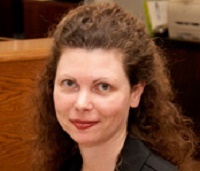
Natylie Baldwin is the author of Understanding Russia and U.S.-Russia Relations: A Primer, forthcoming in Spring of 2019. She is also co-author of Ukraine: Zbig’s Grand Chessboard & How the West Was Checkmated. She has traveled to Russia twice, visiting 6 different cities and interviewing a cross-section of Russians on various issues, including their views of Putin, the economy, US-Russia relations, the Yeltsin era, and the Russian Revolution. She writes for Consortium News and blogs at natyliesbaldwin.com.
“I’m not sure there’s been a better book published this year …. I’m confident there’s not been a more important one.” – Author and activist David Swanson, re Ukraine: Zbig’s Grand Chessboard. . .
Sunday March 31st 2:00 – 4:00
Edith Stone Room
Albany Community Center
1249 Marin Avenue (at Masonic), Albany
For more information call (510) 524-6071
January 27, 2019
The Rule of Law in Russia Under Putin
Here is a short excerpt about democracy and the rule of law under Putin from my forthcoming book:
One very frequent criticism of Russia by the West is that the rule of law is weak, if it exists at all. Let’s look at three important measures of the rule of law in Russia: the rights of the accused, judicial independence, and the confidence and participation of Russian citizens in the court system.
The 1993 constitution guarantees the presumption of innocence for criminal defendants as well as the right to counsel (Henderson 2011). During Putin’s first two terms as president, he introduced or oversaw the implementation of the rights of habeas corpus and trial by jury, and increased rights to exculpatory evidence (Petro 2018). After certain reforms made by Putin to the criminal code, acquittal rates in bench trials (only heard by a judge) doubled and acquittal rates in jury trials tripled, contributing to a 40 percent drop in the overall incarceration rate and a 95 percent drop in the juvenile incarceration rate since 2001 (Petro 2018).
He also introduced the role of bailiffs and Justices of the
Peace (JP’s) into the system (Petro 2018).
JP’s act as judges in the lowest tier of courts and preside over approximately 75 percent of civil cases and 45 percent of criminal cases – most of the latter are resolved through plea bargaining (Hendley 2017). University of Wisconsin Professor Kathryn Hendley concluded in her years-long study of Russia’s court system, Everyday Law in Russia, that JP’s demonstrate independence – in other words, they base their decisions on the written law – in the vast majority of cases before them. Exceptions involve the very small percentage of cases that are politically sensitive, particularly to the Kremlin. In these instances the JP’s will often go along with power as a matter of being socialized into the system rather than being overtly told to do so.
JP’s, who are primarily women and do not enjoy the same prestige as their counterparts in the US, are not specialized and have very heavy caseloads that must be decided within statutory deadlines. Though they generally strive to be fair, they also tend to feel burdened by the workload and diligently seek to avoid reversals on appeal, the ramifications of which can hurt them financially and professionally, though only a small percentage of litigants ever exercise the right of appeal (Hendley 2017).
All JP’s are required to be over the age of 25, have a law degree, and pass an exam and a strict security clearance. They are formally appointed by either regional governors or regional legislative bodies and are often former JP law clerks or prosecutors rather than attorneys in private practice since, as someone who has already served in a public position, their professional background and propensities will be more readily ascertainable. They are then given 3 months of formal training before they are allowed to preside over cases (Hendley 2017).
Hendley also found that overall, in civil and administrative
cases, the Russian government often loses.
State agencies are frequent litigants in civil cases, both as plaintiffs and defendants. Both in JP courts and other courts, they are more likely to lose these cases than are private actors. Their victory in administrative cases involving private citizens, such as traffic violations and fines for noncompliance with various laws, is far from automatic. The same is true in the business setting. Economic actors’ challenges to their treatment by the tax and other regulatory authorities are frequently successful (Hendley 2017).
Court rulings in civil cases favoring private plaintiffs
over the government occur at a rate of approximately 70 percent (Petro
2018).
Furthermore, during Putin’s second term, courts ruled that
individuals arrested without merit must be compensated and compensation limits
for government negligence were struck down, making it more meaningful when the
Russian government comes out on the losing end of such cases (Petro 2018).
Foreign businesses operating in Russia have benefited from the improved state of the legal system. Lawsuits on behalf of foreign businesses have tripled since 2014 and favorable judgments have increased from 59 percent to 83 percent (Petro 2018). Many Russians are reluctant to take a dispute to court, citing time, inconvenience, and “the difficulty of proving one’s case.” But as incomes increase and the traditional informal methods of resolving disputes become less relevant, more Russians are utilizing the court system, increasing from one million in 1998 to over seventeen million in 2016 (Petro 2018). Hendley found many of these Russians to be generally satisfied with their experiences, which largely take place in the JP system, regardless of whether they won or lost. 80 percent of Russians find JP’s to be “well trained and competent” with only 10 percent believing their JP was biased (Hendley 2017).
References:
Henderson, Jane. The Constitution of the Russian Federation: A Contextual Analysis. Hart Publishing. Oxford and Portland, OR. 2011.
Hendley, Kathryn. Everyday Law in Russia. Cornell University Press. Ithaca, NY. 2017. Pp. 137, 142 – 146.
“Are We Reading Russia Right?” by Nicolai N. Petro. The Fletcher Forum of World Affairs. Vol. 42, No. 2, pp. 131-154.
November 6, 2018
Update on Blog Status and What I’m Working On
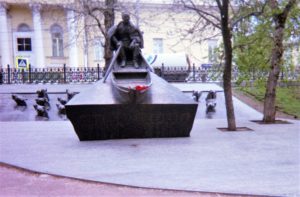 Monument to author of “And Quiet Flows the Don,” Moscow; photo by Natylie Baldwin, May 2017
Monument to author of “And Quiet Flows the Don,” Moscow; photo by Natylie Baldwin, May 2017I wanted to give readers an update to explain the slowdown over the past 6 weeks in posting to my blog. I’m currently transitioning out of my day job and, starting in December, I will be spending the next six months writing full-time.
In addition to a couple of other projects, I will be working full-time on a new book on Russia and U.S.-Russia relations that I hope to have out in late winter or early spring. I will also be working on articles and will be able to post to the blog more regularly.
Thank you for your patience and I hope everyone enjoys the upcoming holidays.
Regards,
Natylie
October 7, 2018
Sunday, Oct. 14th in Lafayette, CA – Russia and the West: What’s True, Exaggerated and False?
Rossmoor Friends of Mt Diablo Peace & Justice Center are proud to present
Natylie Baldwin speaking on
Russia and the West:
What’s True, Exaggerated and False?
Natylie Baldwin will speak about her travels and research in Russia and Crimea. She is co-author of the 2016 book “Ukraine: Zbig’s Grand Chessboard & How the West was Checkmated”.
“I’m not sure there’s been a better book published this year …. I’m confident there’s not been a more important one.” – Author and activist David Swanson
Sunday October 14 at 2 pm
Vista Room at Hillside Clubhouse
3400 Golden Rain Road, Walnut Creek (Rossmoor)
For more information contact Rick at 925-324-3358



